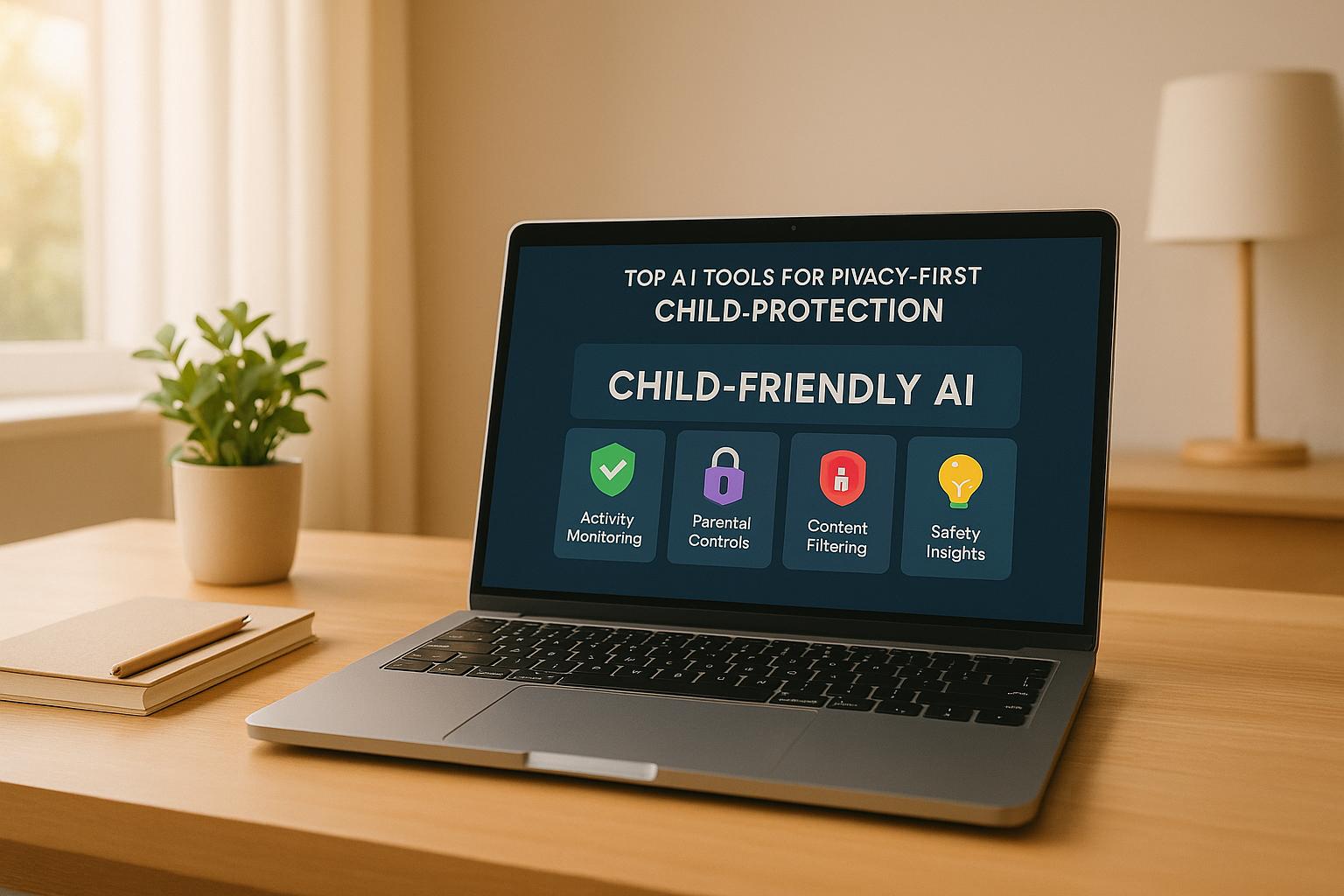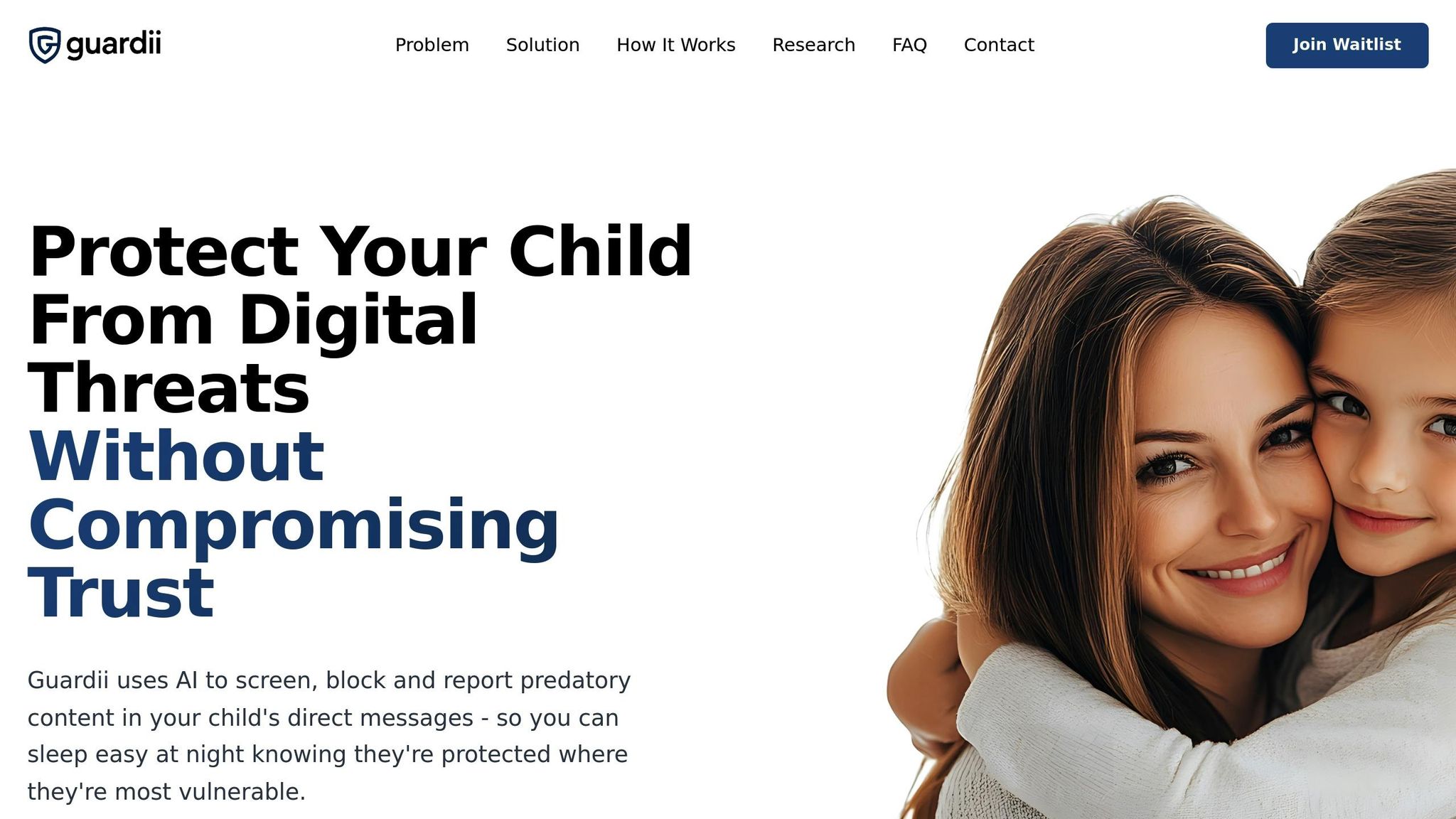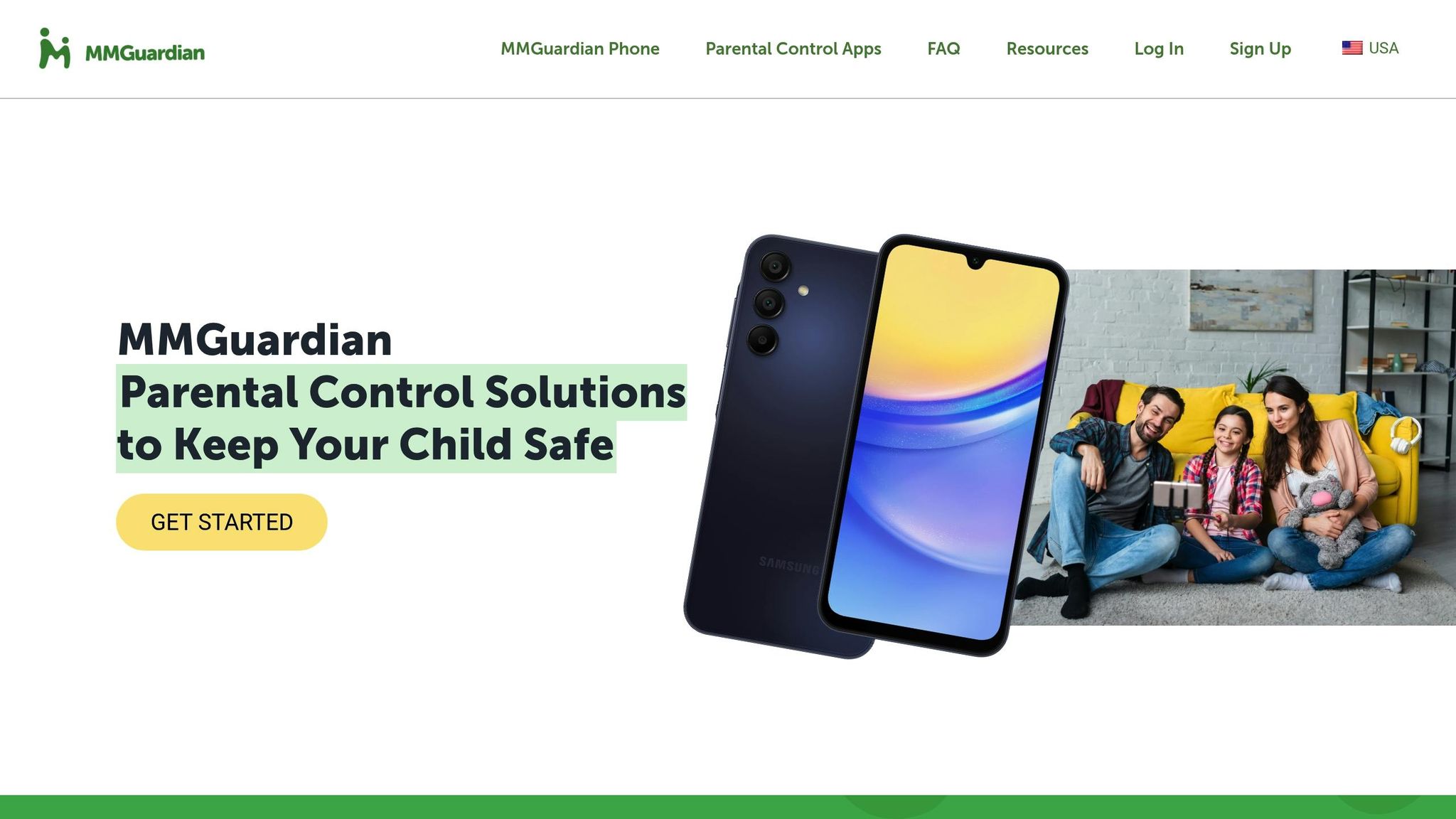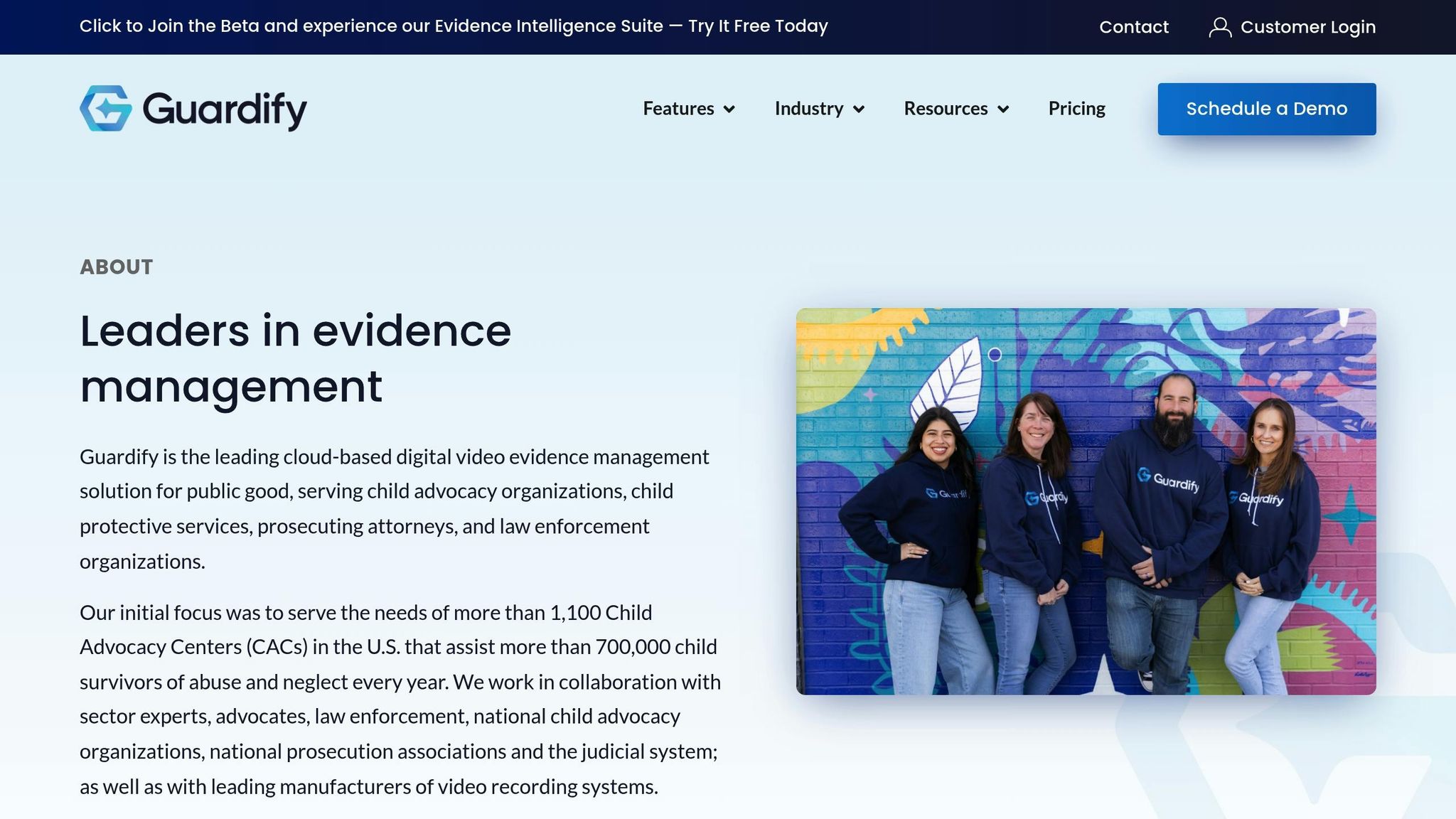
Top AI Tools for Privacy-First Child Protection
The rise in online threats like cyberbullying and predatory behavior has made it harder for parents to protect their kids online without invading their privacy. Many traditional monitoring tools are too intrusive, storing sensitive data or blocking too much content. New AI-driven tools are addressing these issues by focusing on privacy-first designs. These tools detect risks like harmful messages or manipulation tactics without saving detailed personal data, ensuring compliance with laws like COPPA and maintaining trust between parents and children.
Here are five AI tools designed to protect kids online while respecting their privacy:
- Guardii: Detects threats in real-time on messaging platforms without storing sensitive data.
- MMGuardian: Tracks online behavior with encryption and limits data retention to 30 days.
- ChildGuard AI: Promotes privacy and safety but offers limited public details on its features.
- Guardian Watch AI: Focuses on privacy-first protection, though specific features remain unclear.
- Guardify: Claims a privacy-focused approach but lacks transparency about its methods.
These tools aim to balance safety with privacy, offering features like local data processing, real-time detection, and encrypted communication. Parents should choose platforms with clear compliance documentation and features that align with their family’s values.
Best Parental Control Apps for 2025 (Tested with Real Families)
What Makes AI Child Protection Tools Privacy-First
AI child protection tools designed with a privacy-first approach take a very different path compared to traditional monitoring software. Instead of gathering and storing every detail of a child's online activity, these tools zero in on threat detection while ensuring personal information stays secure. This thoughtful design emphasizes privacy without compromising safety.
At the heart of this approach is local processing. Unlike systems that send messages, photos, or browsing data to external servers, these tools analyze content locally using encryption. This keeps sensitive interactions private while still allowing the system to identify risks like predatory behavior or cyberbullying.
Another key feature is real-time threat detection. These tools continuously monitor for harmful patterns without storing records of normal, safe interactions. For example, if a child receives a suspicious message from an unknown adult asking for personal information, the AI flags the behavior immediately, relying on patterns rather than saving the actual conversation.
Instead of blocking content based on simple keywords, these tools use contextual analysis to distinguish between safe and harmful material. This prevents unnecessary restrictions, which are often a frustration with older parental control software, while still keeping children protected.
The principle of data minimization ensures that only anonymized risk scores are stored, avoiding detailed logs of a child’s activity. This aligns with privacy-first values and reassures parents about how their child’s data is handled.
These tools are also designed to comply with regulations like COPPA and state laws such as the California Consumer Privacy Act (CCPA). They include features like obtaining parental consent, offering clear options for data deletion, and meeting strict legal standards for protecting children’s privacy.
For parents, dashboards provide clear and concise safety updates without compromising trust. Instead of showing exactly what a child typed, these dashboards summarize incidents, such as "3 marketing attempts blocked" or "1 potential cyberbullying incident detected", and suggest actions parents can take. This keeps parents informed while respecting their child’s privacy.
When data transmission is necessary, end-to-end encryption ensures that any shared information remains secure. Even when cloud computing power is used for analysis, the content itself stays encrypted and inaccessible.
Finally, these tools embrace automatic data expiration to prevent long-term data accumulation. Safety-related data points are deleted after a set time, ensuring that detailed profiles of children’s online behavior don’t build up. This thoughtful feature addresses one of the biggest concerns families have with traditional monitoring tools, offering peace of mind in a truly privacy-focused way.
1. Guardii

Guardii stands out as a privacy-focused solution, combining real-time monitoring with a commitment to user confidentiality. By leveraging advanced AI, it keeps a watchful eye on direct messaging platforms, identifying and blocking harmful behavior while ensuring sensitive data remains protected. This approach not only bolsters safety but also builds trust among users.
AI Monitoring Capabilities
Guardii uses cutting-edge AI to scan messaging platforms in real time, flagging suspicious activity without storing or accessing personal messages.
Privacy Safeguards
Data is processed locally with encryption, meaning potential threats are detected without compromising sensitive user information.
Parental Transparency
Guardii provides straightforward alerts that highlight potential risks. These alerts are designed to empower timely action without revealing private details, ensuring both safety and privacy are maintained.
2. MMGuardian

MMGuardian takes a privacy-first approach, offering parental control tools that prioritize data protection and regulatory compliance. Its focus on safeguarding information while providing oversight makes it a noteworthy choice for monitoring kids' digital activities.
AI Monitoring Capabilities
The platform uses AI to track various aspects of children's online behavior, including their location, app usage, messages, calls, and browsing history. It generates automated reports based on this data, keeping parents updated on their child's online habits. These features are supported by strong privacy measures to ensure data security.
Privacy Safeguards
MMGuardian limits data retention to 30 days and secures all data transfers with SSL encryption. It collects only the necessary information, giving parents control over what is stored. Parents can manage settings to delete accounts, remove devices, or adjust tracking preferences as needed.
Parental Transparency
The platform provides detailed alerts and reports, allowing parents to customize what information is collected and monitored. MMGuardian also ensures clarity in its data practices, explaining what data is gathered, how long it is retained, and how it is utilized.
U.S. Legal Compliance
MMGuardian complies with major data protection standards, including EU-U.S. DPF, UK Extension, GDPR, and CCPA, while operating under FTC oversight. Its encryption protocols are designed to meet these regulatory requirements, ensuring secure and lawful data handling.
3. ChildGuard AI
ChildGuard AI is designed with a focus on safeguarding children and ensuring their privacy. While specific details about its features - such as AI monitoring, privacy protections, parental oversight, and adherence to legal standards - haven't been shared yet, it's clear that this technology is part of a growing effort to prioritize child safety in the digital age. As the field of privacy-first child protection continues to evolve, more information about what ChildGuard AI offers will be revealed in the future.
sbb-itb-47c24b3
4. Guardian Watch AI
Guardian Watch AI is a newer tool focused on privacy-first protection, but specific details about its features remain unclear. Information about its monitoring capabilities, encryption methods, parental reporting options, and adherence to U.S. regulations has not yet been made public. As more details emerge, it will be easier to evaluate how Guardian Watch AI stacks up against similar privacy-focused tools.
5. Guardify

Guardify promotes itself as a privacy-focused solution for child protection. However, it does not provide clear details about its features or how it complies with U.S. regulations like COPPA. This lack of transparency makes it difficult for parents to gauge how effective or trustworthy the tool truly is. It highlights the need for thorough assessments when comparing these kinds of tools.
Tool Comparison Chart
When it comes to choosing AI-driven child protection tools, parents need straightforward details about how these platforms handle monitoring, safeguard privacy, and maintain transparency. Below is a table comparing five tools based on their core features. This information, paired with the latest regulatory updates, can help parents make informed decisions about tools that emphasize both safety and clarity.
| Tool | AI Monitoring Features | Privacy Protection Methods | Parent Dashboard Transparency | U.S. Legal Compliance Status |
|---|---|---|---|---|
| Guardii | Real-time detection of threats in direct messages; context-aware filtering; automatic blocking of harmful content; evidence preservation | Offers age-appropriate protection levels and a privacy-first design to build trust | Comprehensive dashboard with actionable alerts and detailed reporting | Not publicly documented |
| MMGuardian | Basic filtering and monitoring across various platforms | Implements standard encryption and data protection protocols | Limited dashboard with basic reporting capabilities | Not publicly documented |
| ChildGuard AI | Uses machine learning for AI-powered content analysis | Provides encrypted data storage along with privacy controls | Moderate transparency with some customizable alerts | Not publicly documented |
| Guardian Watch AI | Automated monitoring through pattern recognition technology | Basic privacy safeguards and data protection measures | Standard dashboard with limited customization options | Not publicly documented |
| Guardify | Limited public information about AI features | Claims a privacy-focused approach but lacks detailed methodology disclosure | Transparency levels unclear due to limited feature details | Not publicly documented |
*None of these tools disclose detailed public compliance information.
As the Federal Trade Commission's (FTC) updated COPPA rules take effect on June 23, 2025, with a compliance deadline of April 22, 2026, and with 26 states implementing AI accountability measures that create varying standards, clear communication about compliance is becoming increasingly critical. Additionally, with 19 states mandating age verification for accessing harmful content starting January 2025, parents should prioritize platforms that provide transparent and actionable monitoring features.
Conclusion
Privacy-first AI tools empower parents to safeguard their children online while maintaining trust and respecting privacy. In a world where digital threats are constantly changing, these tools offer a way to balance security with the freedom children need as they grow.
Strict compliance with privacy laws is now a must. Federal and state regulations, like COPPA, mandate adherence to rigorous privacy standards. Additionally, new proposals, such as California's LEAD Act - which would require parental consent before using a child’s personal data to train AI models - highlight the increasing focus on privacy protections in AI technologies.
Parents should look for platforms that prioritize transparency, offer age-appropriate protections, and provide clear documentation of their compliance efforts. Tools like Guardii show that it’s possible to deliver strong digital protection without compromising family trust or a child’s privacy.
However, technology alone isn’t enough. Open and ongoing communication within families plays a critical role in ensuring safety. Studies confirm that discussing AI openly helps children feel more confident and prepared to use it responsibly. Parents can start by asking if their child has interacted with AI-driven tools or chatbots and exploring these technologies together. Teaching kids about AI's flaws - such as errors, bias, and potential for manipulation - also helps them develop the critical thinking skills they need to navigate digital spaces independently. These conversations work hand in hand with AI safeguards to create a well-rounded approach to protection.
FAQs
How do AI tools protect children online while ensuring their privacy?
AI tools protect children's privacy while keeping an eye out for online threats by leveraging techniques like data encryption, anonymization, and local processing. These strategies help ensure that sensitive information stays secure and isn't misused.
Many of these tools also prioritize real-time monitoring to filter harmful content without storing or sharing personal data. This balance allows for effective risk detection while respecting privacy, helping to build trust between parents and their children.
What features should parents look for in AI tools to protect their children online while respecting privacy?
When selecting an AI tool to protect children online, it’s essential to focus on features that prioritize both safety and privacy. Seek out tools that offer encrypted data storage, limit the collection of personal information, and have straightforward, transparent privacy policies.
The best tools should provide features like real-time alerts, customizable content filters, and activity monitoring that respects boundaries and avoids overly intrusive practices. It’s also important to ensure the tool adheres to regulations such as COPPA and GDPR, maintaining a balance between protecting children and respecting their privacy. These elements not only safeguard your child but also foster trust in the digital environment.
How can parents use AI tools to protect their children online while building trust and encouraging open communication?
To build trust with their children while using AI tools, parents should be upfront about why monitoring is necessary. Start by having an open conversation about online safety. Explain how these tools work to shield them from harmful content or interactions. Including your kids in this discussion can make them feel valued and part of the decision-making process.
Opt for privacy-focused tools that prioritize identifying harmful behavior without gathering unnecessary personal information. This approach balances safety with respect for your child’s privacy. By maintaining honest communication and setting clear expectations, parents can create a nurturing environment where kids feel protected and understood.